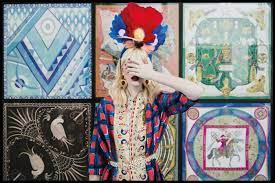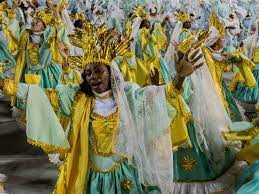Brazil’s culture is a vibrant tapestry woven from diverse threads of indigenous, European, African, and Asian influences. From its pulsating music to its colorful festivals, Brazilian culture is a reflection of the country’s unique heritage and passionate spirit. In this article, we’ll delve into five intriguing facts that shed light on the richness and diversity of Brazilian culture.
Cultural Fusion:

Brazil’s cultural landscape is a testament to its history of multiculturalism and diversity. The country’s indigenous peoples, European colonizers, African slaves, and immigrant populations from Asia and the Middle East have all contributed to the rich tapestry of Brazilian culture. This cultural fusion is evident in every aspect of Brazilian life, from its music and dance to its cuisine and religious practices.
Samba, Brazil’s most iconic musical genre, is a product of this cultural fusion, blending African rhythms with European melodies to create a uniquely Brazilian sound. Similarly, Brazilian cuisine reflects this diversity, with dishes like feijoada (a stew of beans and pork) and acarajé (deep-fried black-eyed pea fritters) combining indigenous ingredients with European cooking techniques.
Carnival:

A Spectacle of Joy and Creativity: Brazil’s Carnival is the world’s largest and most famous celebration, drawing millions of visitors from around the globe to cities like Rio de Janeiro and Salvador. This spectacular event is a vibrant showcase of Brazilian culture, featuring elaborate parades, dazzling costumes, and pulsating samba music.
Carnival is deeply rooted in Brazilian history and culture, with its origins dating back to colonial times. Originally a pagan festival celebrating the arrival of spring, Carnival evolved over the centuries to incorporate elements of African and indigenous traditions, as well as Catholic rituals brought by Portuguese colonizers. Today, Carnival is a time of uninhibited revelry and creativity, where people of all backgrounds come together to dance, sing, and celebrate life.
Capoeira:
The Dance of Freedom: Capoeira is a Brazilian martial art that combines elements of dance, acrobatics, and music. Developed by African slaves in Brazil during the colonial period, capoeira was originally a form of self-defense disguised as a dance to evade detection by slave owners.
Today, capoeira is a cherished part of Brazilian culture, practiced by people of all ages and backgrounds. Its fluid movements, rhythmic music, and dynamic energy make it a captivating art form to watch and participate in. Capoeira also carries deep cultural significance, serving as a symbol of resistance, resilience, and freedom for Afro-Brazilians.
Religious Diversity:

Brazil is a country of religious diversity, with followers of various faiths coexisting peacefully alongside one another. While Catholicism remains the dominant religion, Brazil is also home to large populations of Protestant Christians, Spiritists, and followers of Afro-Brazilian religions like Candomblé and Umbanda.
Afro-Brazilian religions, in particular, play a significant role in Brazilian culture, blending African spiritual traditions with Catholicism and indigenous beliefs. Rituals, ceremonies, and festivals associated with these religions are an integral part of Brazilian life, providing a sense of identity and belonging for millions of Brazilians.
Indigenous Heritage:

Brazil is home to a rich and diverse indigenous heritage, with over 300 distinct indigenous ethnic groups inhabiting the country’s vast territory. Despite centuries of colonization and marginalization, Brazil’s indigenous peoples have preserved their languages, customs, and traditions, enriching the country’s cultural landscape.
Indigenous influence can be seen in various aspects of Brazilian culture, from the names of cities and rivers to the use of native plants in traditional medicine and cuisine. Indigenous art, music, and storytelling also continue to thrive, serving as a reminder of Brazil’s deep connection to its land and its original inhabitants.
Conclusion:
Brazil’s culture is a dynamic tapestry woven from a myriad of influences, reflecting the country’s rich history, diverse population, and boundless creativity. From the pulsating rhythms of samba to the graceful movements of capoeira, Brazilian culture captivates the imagination and inspires awe. As we’ve explored in this article, Brazil’s cultural heritage is a treasure trove of fascinating traditions, rituals, and expressions that continue to shape and define the soul of this extraordinary country.


